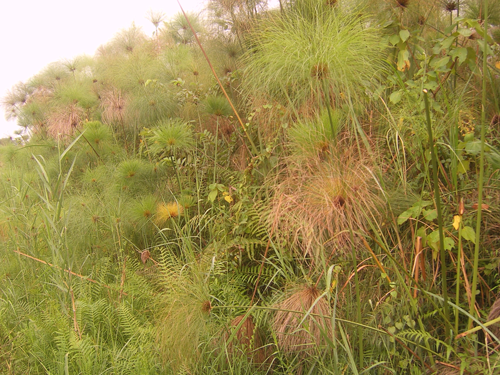Source: Global Biogeochemical Cycles
Although methane decays more quickly in the atmosphere than carbon dioxide does, it rapidly absorbs heat and is a potent greenhouse gas. In 2007, after nearly 2 decades of slowed growth in atmospheric methane levels, the amount of this gas in the air began to rapidly rise.
Historically, rises in methane levels have been driven by fossil fuel leaks. However, earlier this year, researchers at the National Institute of Water and Atmospheric Research in New Zealand found that biogenic sources, which they thought were from agriculture, were the primary cause of the uptick.
Here Nisbet et al. discuss the rise, with new data on the concentrations and isotopic makeup of atmospheric methane. They also conducted a detailed mathematical analysis that allowed them to evaluate methane emissions on shorter timescales and differentiate between the latitudes of emissions.
Specifically, their inquiry delved into the rate of methane flux. Data collected by National Oceanic and Atmospheric Administration’s Cooperative Air Sampling Network show that atmospheric methane increased by 5.7 ± 1.2 parts per billion (ppb) every year between 2007 and 2013; then, in 2014, methane levels jumped up by 12.5 ± 0.4 ppb. Was the jump caused by an increase in emissions or a decrease in methane removal rates?

Over the study period, the amount of carbon-13 (13C) in atmospheric methane decreased compared to the amount of carbon-12 (12C). Different sources of atmospheric methane have distinctive ratios of 13C to 12C, depending on where the methane came from. Since both are stable isotopes of carbon, the team took advantage of the fact that the isotopic ratio in a sample of methane is essentially a fingerprint of the gas’s source. By studying the amount of 13C in methane samples from the Arctic, the tropics, and the Southern Hemisphere, the authors were able to eliminate certain potential sources as the primary cause for the increasing amounts of methane.
Emissions from fracking in the United States or coalfields in China, for example, don’t match the isotopic fingerprint of the atmospheric methane samples: Methane emissions from gas and coalfields are typically richer in carbon-13 than the samples collected throughout the study, indicating that fossil fuel emissions are not the main driver of the recent increase.
The team also found little evidence that changes in methane removal rates could explain the increase, but the isotopic evidence reported in the study did provide strong evidence to support a biogenic, rather than anthropogenic, cause for the rising methane levels. However, although previous research, which did not include latitudinal analysis, suggested that agriculture was responsible for much of the rise, here the scientists found that tropical latitudes played a major role in the growth and pointed to tropical wetlands, which are the dominant low-latitude source of methane. To point definitely to the sources, more work is needed to determine the carbon isotopic signatures of methane from both tropical cows and wetlands. Although wetlands may be emitting a larger share of the new methane than agriculture, it is likely that both are contributing to the rise, in response to recent intense weather changes.
Tropical wetlands are extremely sensitive to climate variations, meaning that changes in temperature or precipitation rapidly translate to changes in methane emissions. Warmer or wetter years mean more emissions. Over the study period, rising temperatures, increased precipitation, and frequent flooding increased methane emissions in many tropical regions.
Because methane levels continue to rise at nearly unprecedented rates, the findings have important implications for policy makers around the globe. Although the growth is biogenic, fossil fuel leaks remain a major source. Control of methane emissions from the oil and gas industries is becoming stricter, but much more can be done worldwide to cut methane from gas and coal use. Stifling emissions from biogenic sources like cows will require much more creative solutions from governments. Most worryingly, if wetlands are primarily responsible for the new growth, is this the start of a strong tropical climate change warming feedback? (Global Biogeochemical Cycles, doi:10.1002/2016GB005406, 2016)
—Kate Wheeling, Freelance Writer
Citation:
Wheeling, K. (2016), Using isotope fingerprints to solve a methane mystery, Eos, 97, https://doi.org/10.1029/2016EO065017. Published on 16 December 2016.
Text © 2016. The authors. CC BY-NC-ND 3.0
Except where otherwise noted, images are subject to copyright. Any reuse without express permission from the copyright owner is prohibited.

